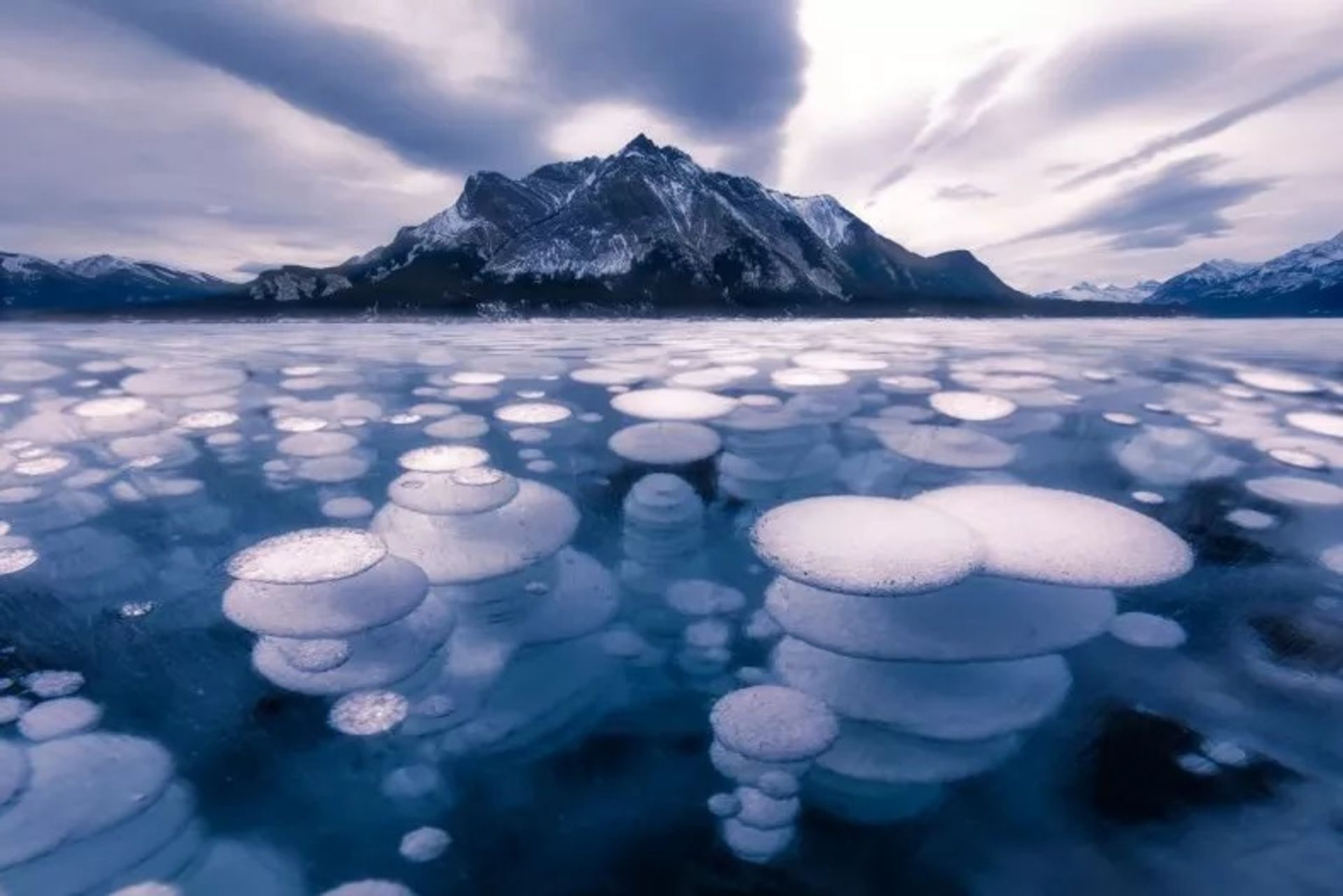"The role of sea ice in the Arctic methane cycle cannot be overstated”
November 12th, 2024
Methane is released from various sources in the Arctic, including deep-water marine environments, shallow continental shelves, and beneath glaciers and permafrost. As the climate warms, these methane accumulations become increasingly vulnerable, leading to concerns about their potential leakage into the atmosphere.
This situation is particularly alarming given that methane is a potent greenhouse gas, with a much higher global warming potential than carbon dioxide, a recent editorial co-authored by researchers from the iC3 Polar Research Hub warns.

Photo: Bubbles of methane locked in a frozen lake, via Newsweek. Credit: Getty Images.
One of the key insights from recent research is the interconnectedness of the Arctic's hydrologic systems and methane transport processes.
Studies indicate that sea ice plays a crucial role in the Arctic methane cycle. New findings suggest that sea-ice leads—openings in the ice—can act as sinks for atmospheric methane as they refreeze. This process may become more significant as the Arctic Ocean shifts to a seasonal ice cover regime, highlighting the dynamic nature of methane interactions in this region.
"The role of sea ice in the Arctic methane cycle cannot be overstated,” said iC3’s Jochen Knies, senior author of the editorial.
“As we transition to a regime of seasonal ice cover, the dynamics of methane emissions will likely shift in ways we are only beginning to understand."
Increased research and monitoring of methane emissions in the Arctic are essential to better understand their sources, transport mechanisms, and potential impacts on climate, he added.
Researchers at the University of Tromsø, iC3’s host institution, have long been at the forefront of studying the interactions between Arctic climate change and methane emissions.
The editorial was published in Frontiers Earth Science and is available open access.